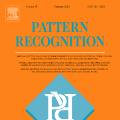Spinal cord injuries can often lead to quadriplegia in patients limiting their mobility. Wheelchairs could be a good proposition for patients, but most of them operate either manually or with the help of electric motors operated with a joystick. This, however, requires the use of hands, making it unsuitable for quadriplegic patients. Controlling eye movement, on the other hand, is retained even by people who undergo brain injury. Monitoring the movements in the eye can be a helpful tool in generating control signals for the wheelchair. This paper is an approach to converting obtained signals from the eye into meaningful signals by trying to control a bot that imitates a wheelchair. The overall system is cost-effective and uses simple image processing and pattern recognition to control the bot. An android application is developed, which could be used by the patients' aid for more refined control of the wheelchair in the actual scenario.
翻译:轮椅对病人来说可能是一个很好的建议,但大多数病人要么手动操作,要么在电动马达的帮助下操作。然而,这需要用手,使手不适合四肢病人。另一方面,即使是脑损伤的人也保留控制眼部运动。监测眼部运动可以作为产生轮椅控制信号的有用工具。本文是一种将眼睛获得的信号转换为有意义的信号的方法,试图控制模仿轮椅的机器人。整个系统具有成本效益,使用简单的图像处理和模式识别来控制机器人。正在开发一个机器人应用程序,可以通过病人的帮助在实际情况下对轮椅进行更完善的控制。









